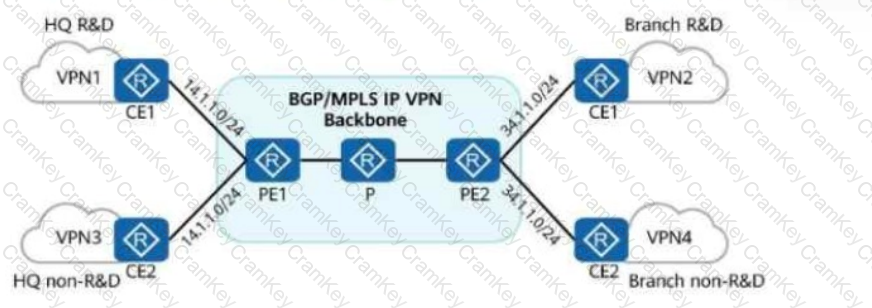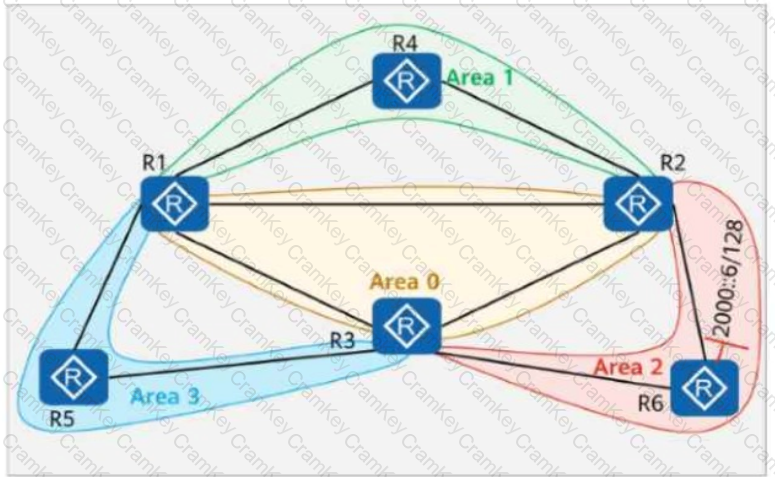Comprehensive and Detailed In-Depth Explanation:
Understanding the LSA Table in the Figure
The LSDB (Link-State Database) of R4 displays an Intra-Area-Prefix-LSA for Area 0.0.0.1. The table contains:
Three LSAs originating from R4 (10.0.4.4)
Prefixes referencing both Router-LSAs and Network-LSAs
Different Sequence Numbers and Checksums, indicating multiple link-state changes
OSPFv3 LSA Types Relevant to the Question
Router-LSA (Type 1)
Network-LSA (Type 2)
Generated only by the Designated Router (DR) for multi-access networks (such as Ethernet).
Advertises all routers connected to the same segment.
Intra-Area-Prefix-LSA (Type 9)
Analysis of Each Statement
A. The three LSAs belong to area 1. ✅ (True)
The table explicitly shows "Intra-Area-Prefix-LSA (Area 0.0.0.1)", meaning all LSAs are for Area 1.
The Link State IDs also indicate intra-area advertisements.
✅ Statement A is correct.
B. Area 1 is a stub area. ❌ (False)
There is no indication that Area 1 is a stub area.
Stub areas do not receive Type 5 (External) LSAs, and the LSDB does not show Type 3 (Inter-Area) LSAs either.
Network-LSAs (Type 2) are not typically seen in stub areas unless explicitly configured.
❌ Statement B is incorrect.
C. No OSPFv3 neighbor relationship is established on at least one link of R4. ✅ (True)
One LSA references a Router-LSA, while two reference Network-LSAs.
A Router-LSA alone suggests that R4 has at least one point-to-point or unnumbered link with no OSPFv3 adjacency.
This means R4 has an interface with no neighbor (e.g., a passive interface or down link).
✅ Statement C is correct.
D. R4 is the DR on a link. ✅ (True)
The presence of Network-LSAs (Type 2) indicates that a multi-access link exists.
Since R4 is the origin of the Network-LSA, it must be the DR (Designated Router) for that link.
✅ Statement D is correct.
Final Conclusion:
✅ A. The three LSAs belong to area 1. (True)❌ B. Area 1 is a stub area. (False)✅ C. No OSPFv3 neighbor relationship is established on at least one link of R4. (True)✅ D. R4 is the DR on a link. (True)
Thus, the correct answers are: A, C, D.
[Reference:, HCIP-Datacom-Advanced Routing & Switching Technology V1.0 – OSPFv3 LSA Types and DR/BDR Election, Huawei Official HCIP-Datacom Study Guide – OSPFv3 Neighbor States and Link Types, Huawei Documentation on OSPFv3 LSAs and Stub Area Configurations, , , ]


